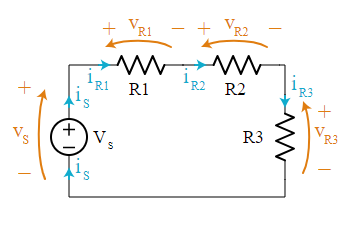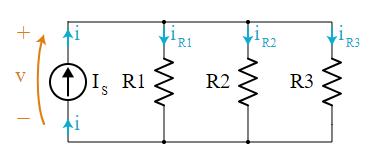[Español]
En esta ocasión, nos adentraremos en la interconexión de los fundamentos clave de la electrónica, dando continuidad a la parte 2 de este blog. Si aún no has tenido la oportunidad de leerla, te animo a hacerlo para mantenernos al tanto y comenzar a explorar las aplicaciones de la Ley de Ohm y las relaciones físicas de los tres conceptos esenciales previamente abordados. Asimismo, examinaremos cómo estos conceptos se aplican en circuitos serie, paralelo y mixto, y cómo podemos emplear la Ley de Ohm para resolverlos, lo que nos permitirá diseñar y entender sistemas eléctricos y electrónicos de manera más efectiva.
En un circuito eléctrico, las resistencias pueden estar conectadas de diferentes maneras: en serie, en paralelo o en una combinación de ambas, conocida como circuito mixto.
En un circuito serie, las resistencias están conectadas una después de la otra, de modo que la corriente que fluye a través de una también fluye a través de las demás. Esto significa que la corriente es la misma en todas las resistencias, pero el voltaje se divide entre ellas.

La resistencia total en un circuito serie es la suma de todas las resistencias individuales.

Por otro lado, en un circuito paralelo, las resistencias están conectadas de manera que cada una tiene su propio camino para que la corriente fluya a través de ellas. Esto significa que el voltaje es el mismo en todas las resistencias, pero la corriente se divide entre ellas.

La resistencia total en un circuito paralelo se calcula de manera diferente a la serie, usando la fórmula inversa de la suma de los inversos de las resistencias individuales.

Un circuito mixto combina elementos de ambos tipos de circuitos: tiene partes en serie y partes en paralelo. Para resolver un circuito mixto, primero se deben identificar las partes en serie y en paralelo, luego calcular la resistencia total de cada parte y finalmente combinarlas para obtener la resistencia total del circuito. La resolución de este circuito lo vamos a ver más adelante para poder entender mejor estos conceptos y poder empezar a ver la primera ley de kirchhoff.
Aplicar la Ley de Ohm en estos circuitos implica usar la fórmula V = I * R para calcular el voltaje, la corriente o la resistencia en función de los valores conocidos. Por ejemplo, si se conoce el voltaje y la resistencia en un circuito serie, se puede calcular la corriente utilizando la fórmula I = V / R. O si se conoce la corriente y la resistencia en un circuito paralelo, se puede calcular el voltaje utilizando la fórmula V = I * R.
Comprender y aplicar estos conceptos y fórmulas es fundamental para diseñar, analizar y solucionar problemas en circuitos eléctricos, lo que nos permite construir dispositivos electrónicos y sistemas eléctricos más eficientes y seguros para diversas aplicaciones en la vida cotidiana y en la industria.
[English]
On this occasion, we will delve into the interconnection of the key fundamentals of electronics, continuing part 2 of this blog. If you have not yet had the opportunity to read it, I encourage you to do so to stay up to date and begin to explore the applications of Ohm's Law and the physical relationships of the three essential concepts previously addressed. Likewise, we will examine how these concepts apply in series, parallel and mixed circuits, and how we can use Ohm's Law to solve them, allowing us to design and understand electrical and electronic systems more effectively.
In an electrical circuit, resistors can be connected in different ways: in series, in parallel or in a combination of both, known as a mixed circuit.
In a series circuit, the resistors are connected one after the other, so that the current that flows through one also flows through the others. This means that the current is the same across all resistors, but the voltage is divided between them.

The total resistance in a series circuit is the sum of all the individual resistances.

On the other hand, in a parallel circuit, the resistors are connected in a way that each has its own path for current to flow through them. This means that the voltage is the same across all resistors, but the current is divided between them.

The total resistance in a parallel circuit is calculated differently than in series, using the inverse formula of the sum of the inverses of the individual resistances.

A mixed circuit combines elements of both types of circuits: it has series parts and parallel parts. To solve a mixed circuit, you must first identify the series and parallel parts, then calculate the total resistance of each part, and finally combine them to obtain the total resistance of the circuit. We will see the resolution of this circuit later in order to better understand these concepts and begin to see the first Kirchhoff's law.
Applying Ohm's Law in these circuits involves using the formula V = I * R to calculate voltage, current, or resistance based on known values. For example, if you know the voltage and resistance in a series circuit, you can calculate the current using the formula I = V/R. Or if the current and resistance in a parallel circuit are known, the voltage can be calculated using the formula V = I * R.
Understanding and applying these concepts and formulas is essential for designing, analyzing and troubleshooting electrical circuits, allowing us to build more efficient and safe electronic devices and electrical systems for various applications in everyday life and industry.
Congratulations @profwhitetower! You have completed the following achievement on the Hive blockchain And have been rewarded with New badge(s)
Your next target is to reach 100 upvotes.
You can view your badges on your board and compare yourself to others in the Ranking
If you no longer want to receive notifications, reply to this comment with the word
STOPCheck out our last posts:
Hace tiempo que no veía material sobre este tema. Me trae muchos recuerdos, hoy día trabajo mucho con electrónica, pero confieso que al principio era bastante malo en el tema.
El mundo de la electrónica es inmenso, al comienzo siempre se nos escapan cosas, y una de las razones por las que empece a escribir es justamente esto que comentas, tratar de hacer de la electronica algo sencillo y fácil de poder empezar a conocer.
Gracias por tu comentario y espero seguir leyéndonos.
Un abrazo.